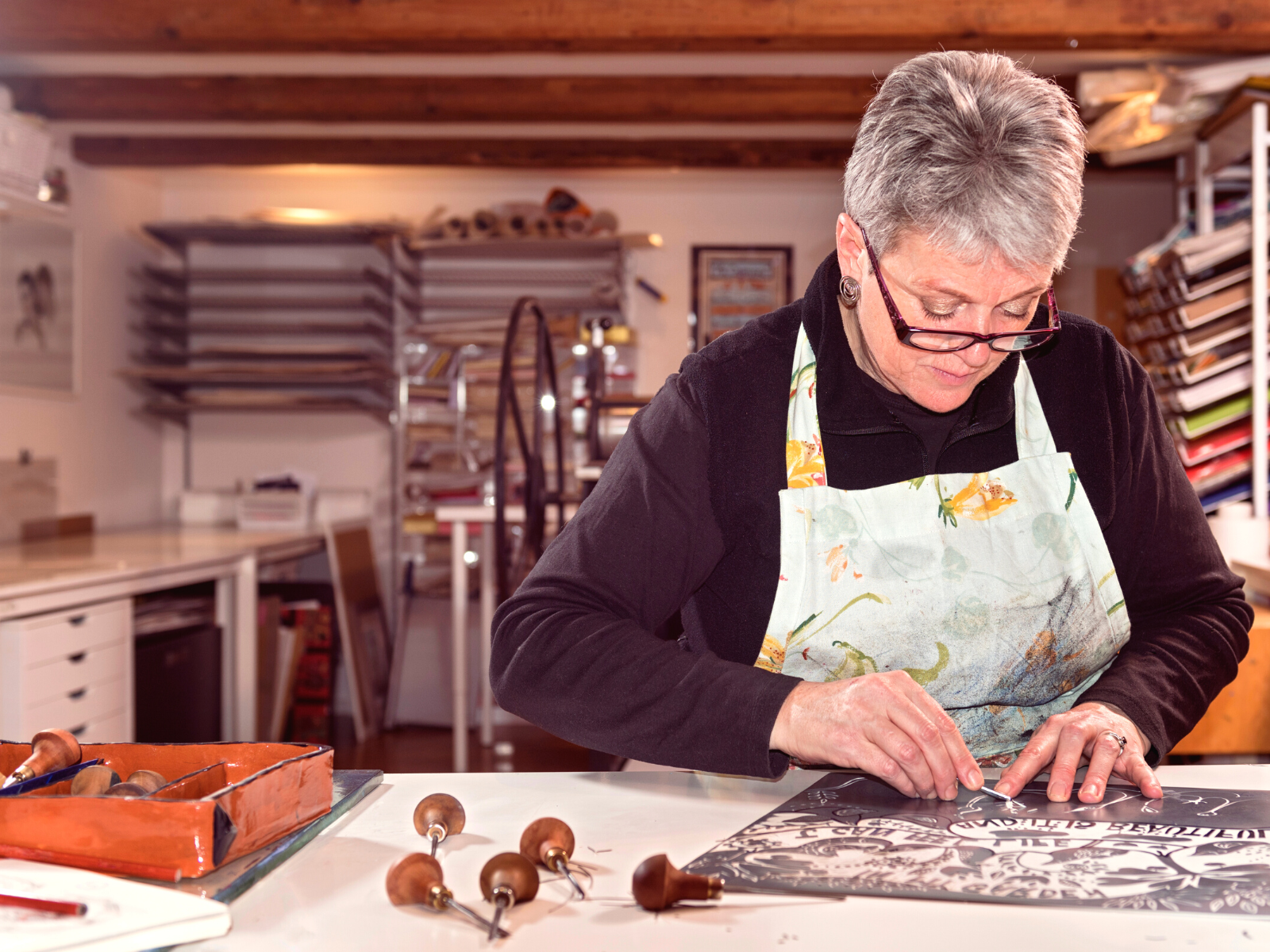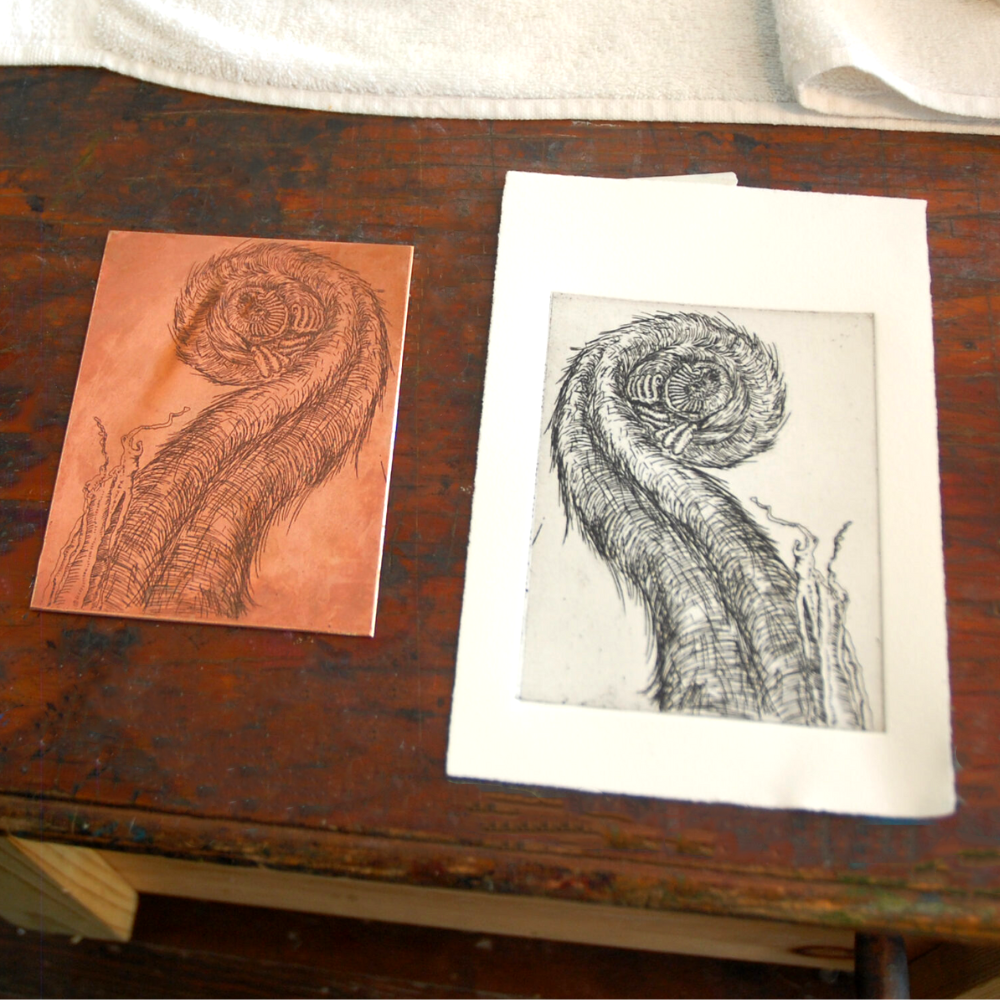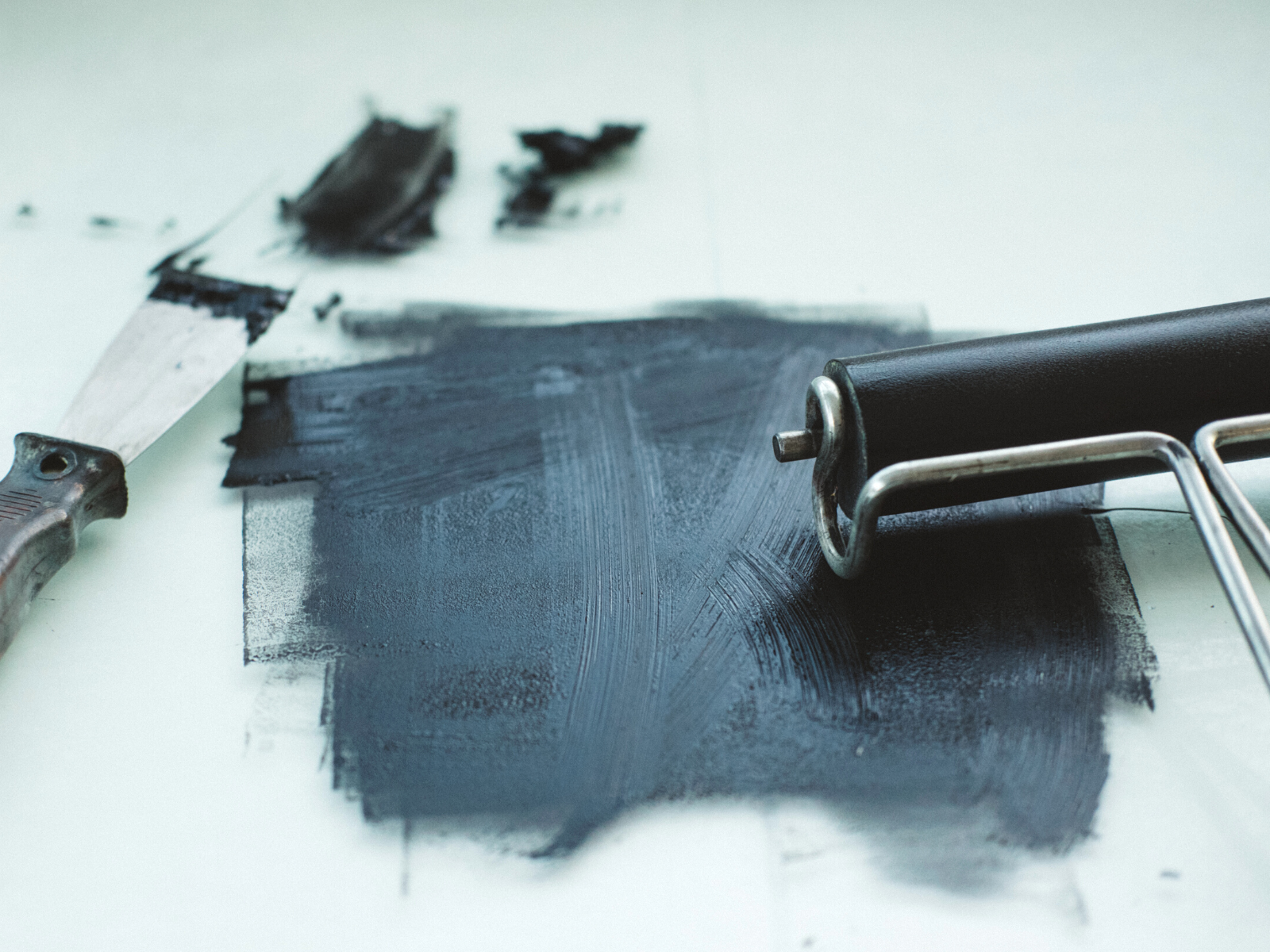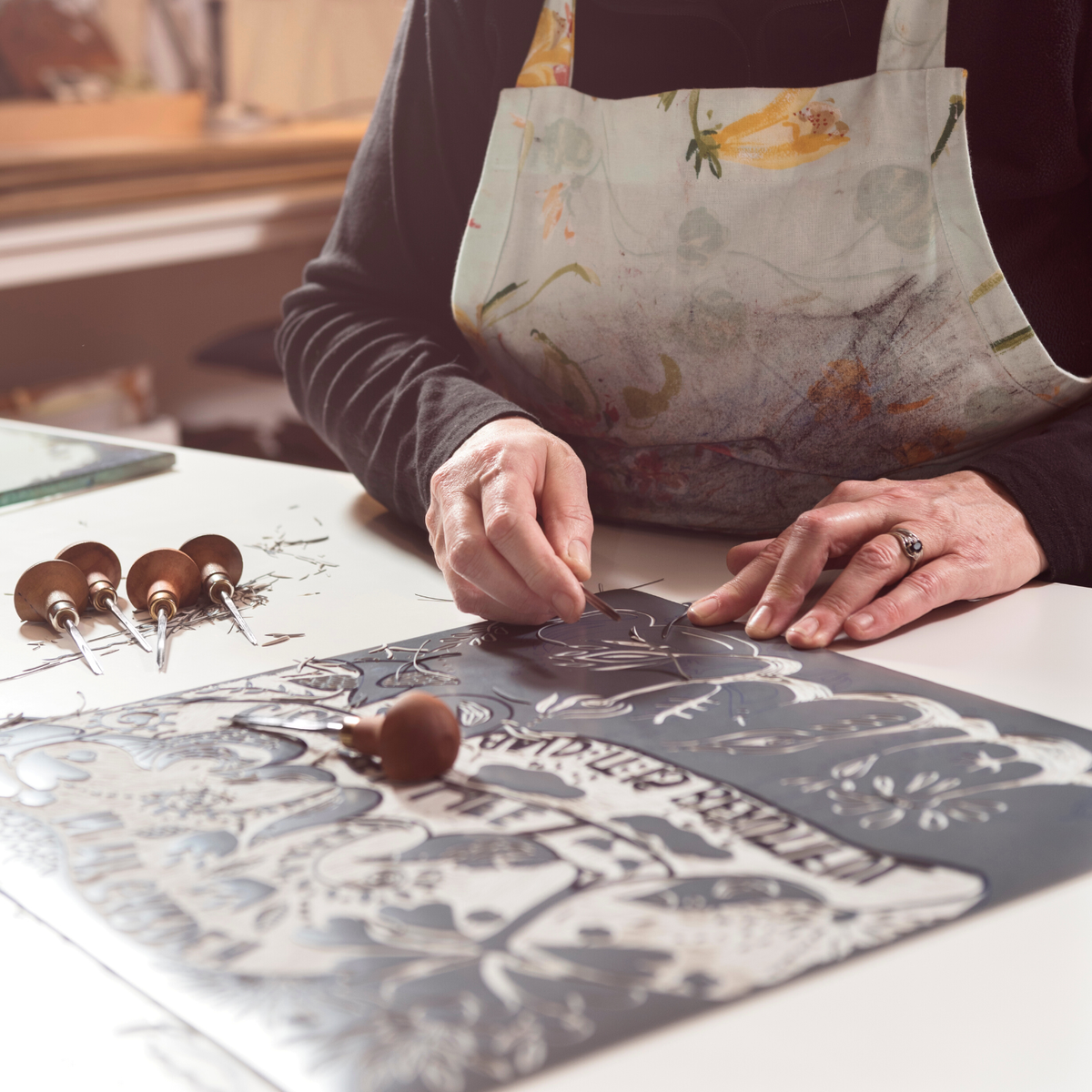So, you've dabbled in various forms of art, from painting to sculpting, and now you find yourself eager to explore the world of printmaking.
You've heard whispers of its mesmerizing beauty, its intricate techniques, and its ability to create stunning masterpieces.
But as you embark on this creative journey, you can't help but wonder: what is the hardest printmaking technique?
In this blog post, we are going to delve deep into the realm of printmaking, unveiling the complexity that lies within each technique.
Whether you're a seasoned artist or a curious beginner, get ready to be captivated by the limitless possibilities and the challenges that arise when plunging into this captivating art form.
We'll unravel the secrets behind the seemingly effortless masterpieces you see hanging in galleries, and reveal the hidden complexities that lie behind every stroke of ink.
Let's explore the uncharted territories of this art form, shedding light on the most challenging and enigmatic techniques that leave artists in awe.
So, grab your aprons, dust off your carving tools, and let's dive headfirst into the world of printmaking; it's going to be an exhilarating ride!
Key Takeaways:
- Intaglio printmaking is often considered the hardest printmaking technique due to its intricate processes and the skill required.
- The creation of intaglio prints involves a meticulous chemical process and precise handwork on a metal plate.
- Understanding the complexities of intaglio and other printmaking techniques can enhance appreciation for the art form and its practitioners.



Printmaking 101
As artists, we're always on the lookout for fresh and innovative ways to create art.
Printmaking is an excellent medium for creating striking designs that you can reproduce time and time again.
It's an art form that has been around for centuries, captivating audiences with its unique visual qualities and the ability to create multiple copies of a single image.
Simply put, printmaking is the process of creating a design on one surface and transferring it onto another.
Sounds simple enough, right? Well, not quite.
Printmaking techniques vary in complexity and require specific tools, materials, and skills to create different types of prints.
From woodcuts to lithography to screen printing, each technique has its own challenges and intricacies.
But with so many techniques to choose from, it can be challenging to know where to begin.
Among the various techniques of printmaking, one stands out for its complexity and the level of skill required: intaglio printmaking.
What is Intaglio Printmaking?
Intaglio printmaking, also known as engraving or etching, is a technique that involves creating an image on a metal plate through various processes such as engraving, drypoint, aquatint, and etching.
The metal plate is then inked and pressed onto paper to create the final print.
What makes intaglio unique is the depth of the lines and textures that can be achieved on the metal plate, resulting in intricate and detailed prints.
So, what makes intaglio printmaking so challenging?
For starters, the creation of an intaglio print requires a high level of precision and skill.
The artist must delicately etch or engrave the metal plate to create intricate lines and textures while also considering the chemical processes involved in creating different tones and values.
Additionally, the printing process involves applying just the right amount of ink onto the plate and using a high-pressure press to transfer the design onto paper.
Any mistake or miscalculation during this process can result in a flawed print, making intaglio one of the most technically demanding techniques in printmaking.
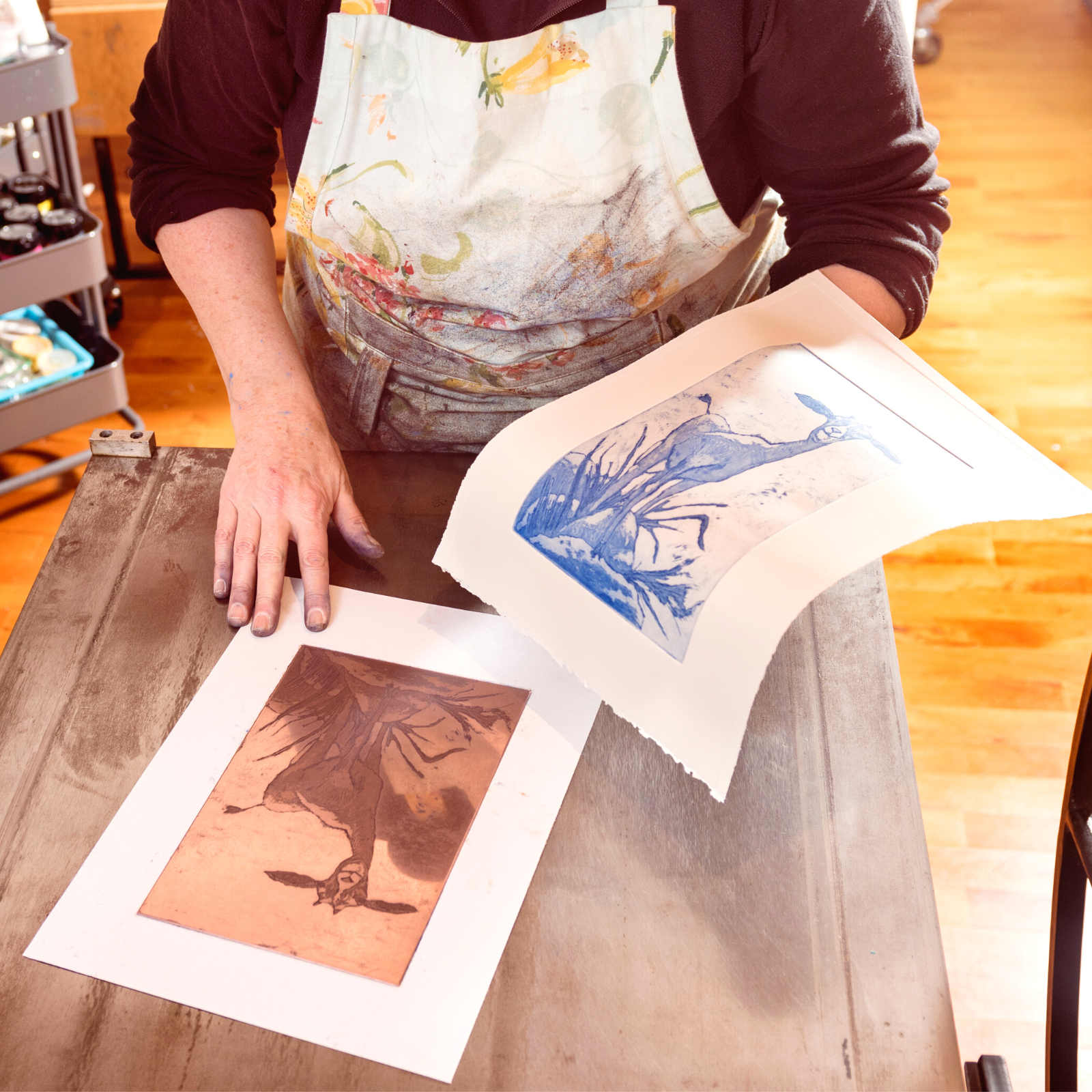


The Intricacies of Intaglio Printmaking
Intaglio printmaking is a technique where the image to be printed is incised into a metal surface, traditionally a copper or zinc plate.
This method is known for its ability to produce prints with fine details and a rich tonal range.
The intaglio processes involve etching or engraving the metal plate with tools or using a chemical process such as an acid bath to create grooves in the plate.
The plate is then covered with a thin layer of oil-based ink.
The surface is wiped clean, leaving ink only in the incised lines.
When the inked plate is pressed onto a printing surface with a printing press, the final image is transferred, revealing the artist's intended design.
Intaglio is considered the hardest printmaking technique due to its intricate process that involves detailed engraving or etching on a metal plate, a meticulous inking process, and the use of a printing press to create the final image.
It requires a high level of skill, precision, and patience.
The time it takes to create an intaglio print can vary greatly depending on the complexity of the image, the techniques used, and the artist's proficiency.
It can take anywhere from several hours to several weeks to complete a single intaglio print.
This long and meticulous process is what makes intaglio a challenging and time-consuming technique.
The Artistic Merit of Intaglio Techniques
Despite the challenges, intaglio techniques are highly valued for their artistic merit.
They allow for a wide range of expressive possibilities, from bold lines to fluid lines and subtle tonal variations.
Artists like Pablo Picasso have utilized intaglio to create unique visual qualities in their work.
The depth and texture that can be achieved with intaglio are unmatched by other printmaking methods, making it a favorite among artists who are willing to master its complexities.
Significance of the Printing Surface
The choice of printing surface, whether a stone or metal plate for intaglio or a smooth surface for relief print, is pivotal in the printmaking process.
Each material imparts its own qualities to the final print.
For instance, a stone plate, often used in lithography, interacts with gum arabic and oil-based ink in a unique way due to its porous nature.
The artist can draw or paint directly onto the stone with a greasy substance, and then the stone is treated with gum arabic, ensuring that the oil-based ink adheres only to the drawn areas.
In contrast, screen print techniques utilize a flat surface where a mesh is used to transfer ink onto a substrate, except in areas made impermeable to the ink by a blocking stencil.
The versatility of screen printing allows for the reproduction of images on a variety of surfaces, from paper to textiles, and it can accommodate large, flat planes of color.
The precision required in preparing the screen and the exposed metal or mesh ensures that the ink passes through only the desired areas, making it a favored technique for its crisp, vibrant results.
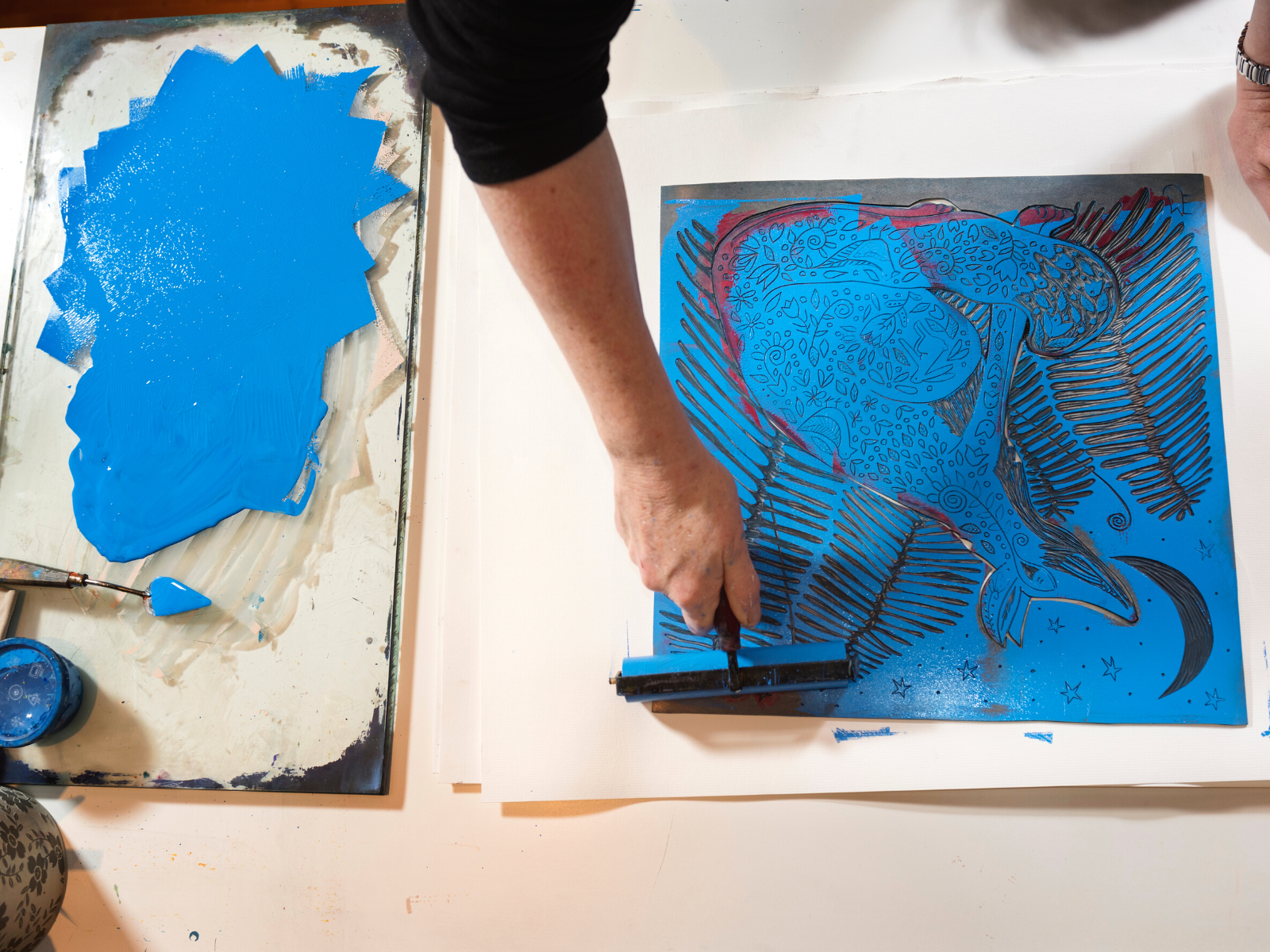


The Use of Metal Plates in Intaglio
The choice of a metal plate, typically copper or zinc, is a key element in intaglio printmaking.
The durability of the metal allows for the creation of fine lines and details that would be difficult to achieve with softer materials.
Additionally, the metal surface can withstand the pressure of the printing press and the repeated inking and wiping required to create multiple copies of a print.
The Importance of Printing Ink in Intaglio
The type of printing ink used in intaglio is also crucial.
Oil-based ink is preferred because it provides a rich, dense color and adheres well to the etched lines of the metal plate.
The ink must be carefully applied and wiped from the plate to ensure that it remains only in the incised areas.
This process, known as inking up, is a delicate balance between applying enough ink to achieve a strong print and removing excess ink to maintain the clarity of the final image.
The Role of Negative Space in Intaglio
Negative space plays a significant role in intaglio printmaking.
The areas of the plate that are not incised do not hold ink and thus appear as the white or unprinted areas in the final image.
This contrast between the inked lines and the negative space is what creates the visual impact of the print.
Mastery of negative space is essential for intaglio artists, as it influences the overall composition and depth of the print.
The Complexity of the Intaglio Process
The intaglio process is complex, involving multiple steps that must be executed with precision.
From preparing the plate with a ground to resist the acid, to etching or engraving the image, to inking and wiping the plate, and finally running it through the press with the paper, each step requires careful attention to detail.
This complexity is what makes intaglio one of the most challenging printmaking techniques to master.
The Durability of Intaglio Prints
Intaglio prints are known for their durability.
The depth of the lines etched into the metal plate allows for a greater volume of ink to be held, resulting in prints that can withstand the test of time without fading.
This longevity is a testament to the robustness of the intaglio technique and the quality of prints it produces.
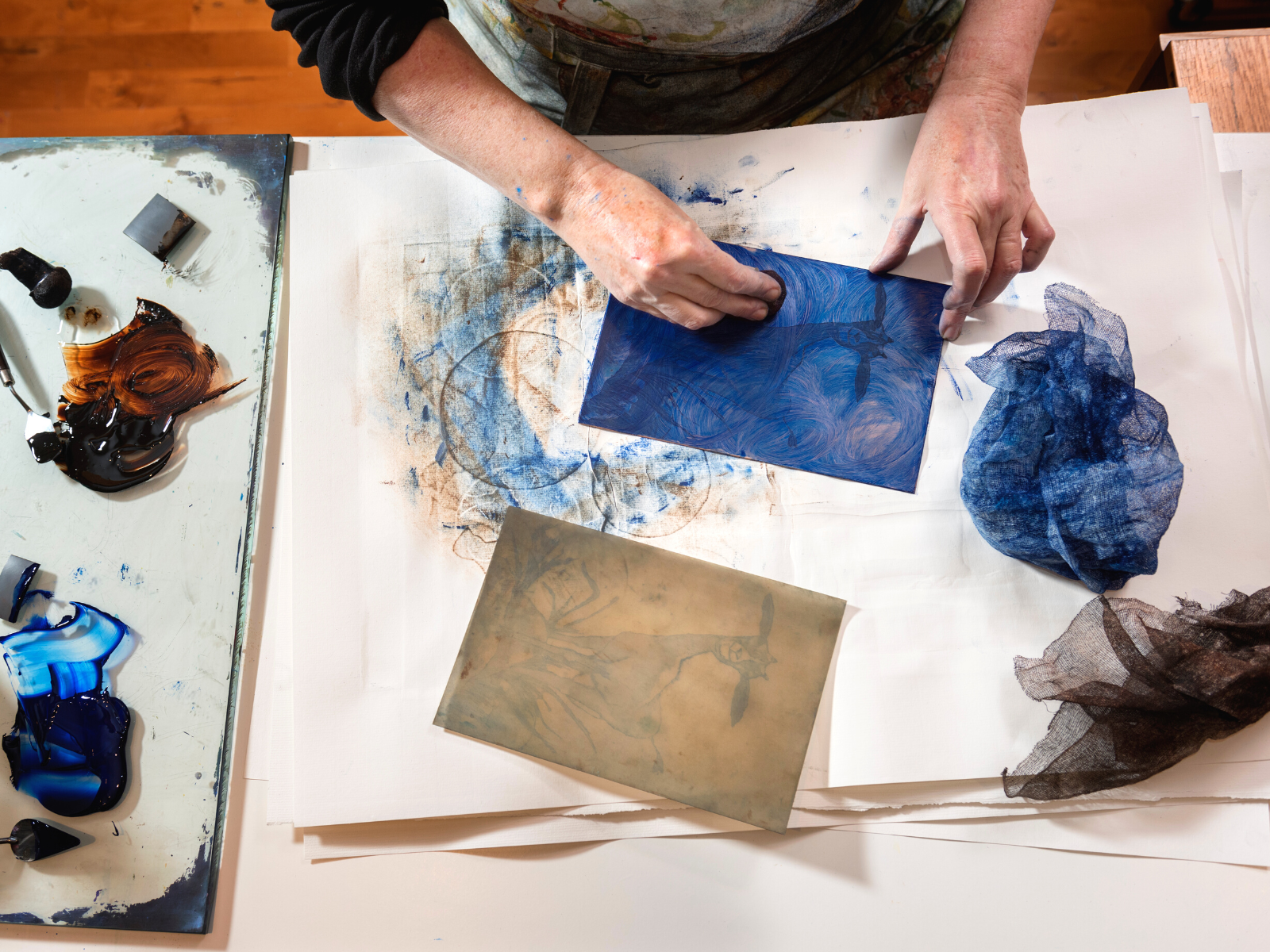


The Versatility of Intaglio Techniques
Intaglio techniques are versatile, allowing artists to experiment with a variety of effects.
Techniques such as aquatint and mezzotint can be used to create tonal variations and textures that are difficult to achieve with other printmaking methods.
This versatility makes intaglio a powerful tool for artists who wish to explore the full range of printmaking possibilities.
The Role of the Printing Press
A key characteristic of intaglio printmaking is the use of a printing press, which applies pressure to transfer the ink from the recessed lines onto the paper.
The press ensures that the paper comes into contact with all the inked grooves, resulting in a print with fine details and tonal variations.
The pressure must be carefully calibrated; too much force can damage the paper or the plate, while too little can result in an incomplete transfer of ink.
The printing press is a crucial component in the intaglio technique, distinguishing it from other methods where pressure is not as significant.
Comparing Intaglio to Other Techniques
When examining other printmaking techniques, such as woodblock printing, screen printing, and lithography, intaglio stands out for its complexity.
Woodblock printing, for example, is a relief printing method that involves carving an image into a block of wood, leaving the areas to be inked raised above the original surface.
Unlike intaglio, the ink is applied to the raised surface, and the print is made by pressing the inked block onto paper.
This method is generally considered less complex than intaglio, as it does not require a printing press or an intricate chemical process.
Similarly, screen printing and lithography each have their own specific tools and techniques but do not involve the intricate processes of intaglio.
The Subtleties of Relief Printing Techniques
Relief printmaking stands in stark contrast to the intaglio process, offering a unique set of challenges and artistic opportunities.
Unlike intaglio, where the image is incised into a surface, relief printing involves carving away the negative space, leaving the image to be printed raised above the surface of the printing plate.
This technique, which includes wood engravings and linocuts, requires the artist to think inversely about the image as they carve, considering the raised areas as the ink-receiving elements.
The application of oil-based ink onto the raised surface is a delicate operation that demands precision.
The ink must be applied evenly across the surface to ensure a consistent print.
Once the ink is applied, the paper is pressed onto the plate, transferring the ink from the raised areas onto the paper.
This method, while seemingly a simple process, requires a deep understanding of the interplay between the flat planes of the image and the texture that the carving imparts, making it a distinct and challenging printing technique.


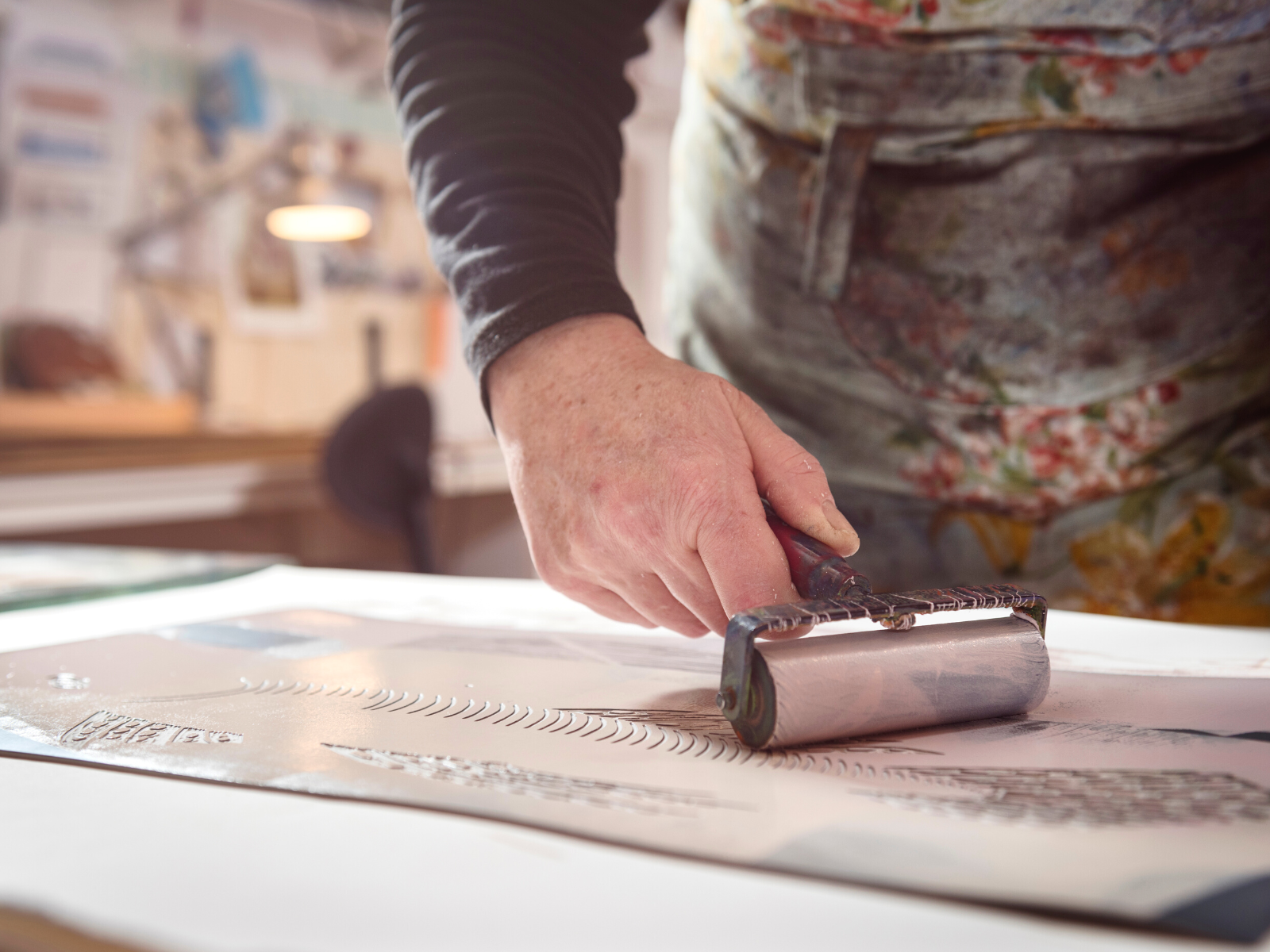
The Challenge of Creating Intaglio Prints
The creation of intaglio prints is not only technically demanding but also physically taxing.
Artists must have a steady hand and a keen eye for detail to engrave or etch the metal plate with precision.
The chemical process of creating an etched plate also requires knowledge of the materials and safety precautions.
The entire process, from preparing the plate with an acid-resistant ground to exposing it to the acid bath, demands patience and control to achieve the desired depth and detail in the exposed lines.
The Rewards of Tackling Intaglio Printmaking
While the level of skill and precision required for intaglio printmaking may seem daunting to some, it is precisely these challenges that make it such a rewarding technique.
The ability to create prints with intricate and detailed designs, rich tonal range, and fine textures is a skill worth mastering.
Moreover, understanding the complexities of intaglio can enhance one's appreciation for the art form and its practitioners.
It takes dedication, patience, and an eye for detail to create a flawless intaglio print, making it one of the most challenging and respected printmaking techniques in the art world.

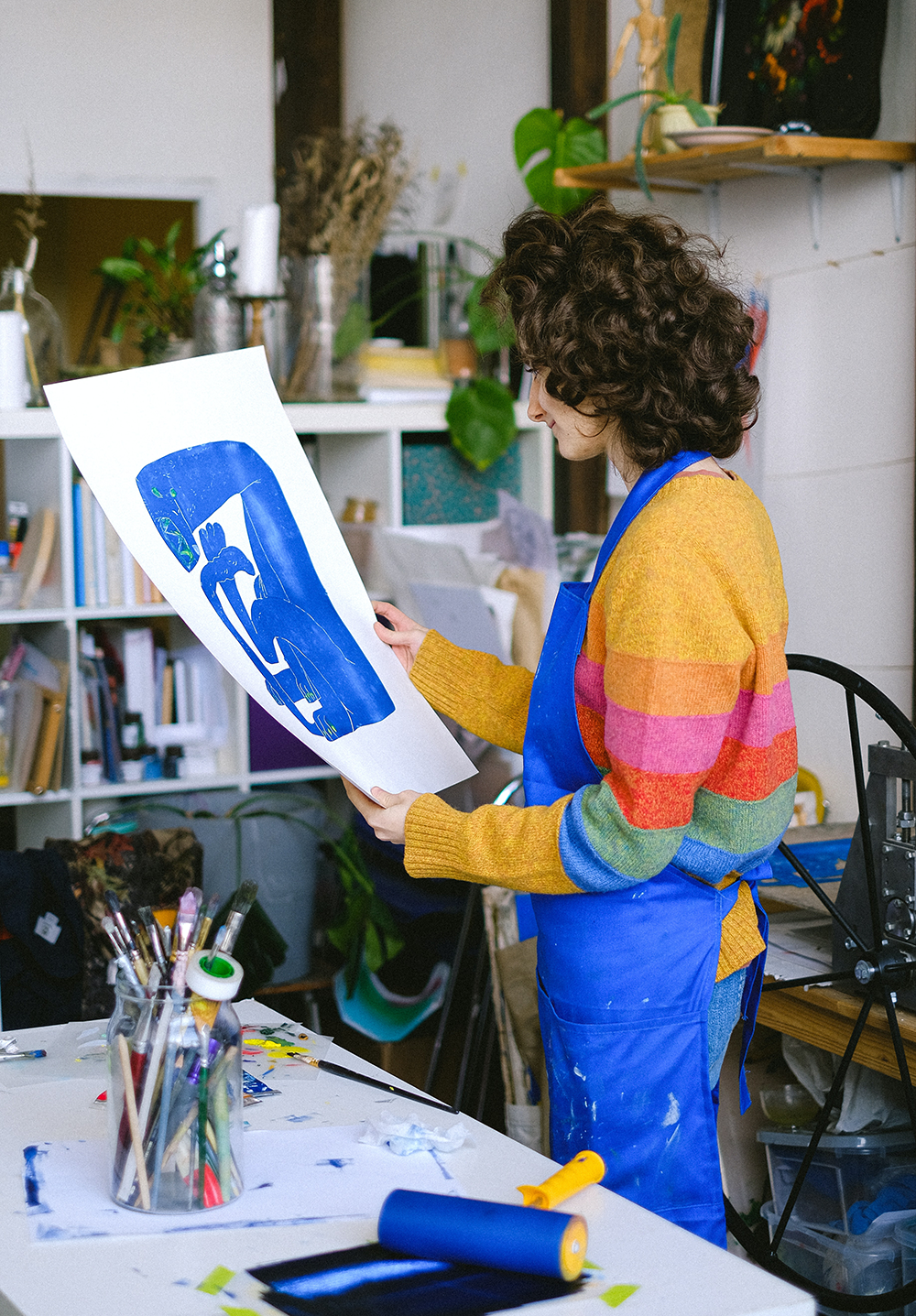
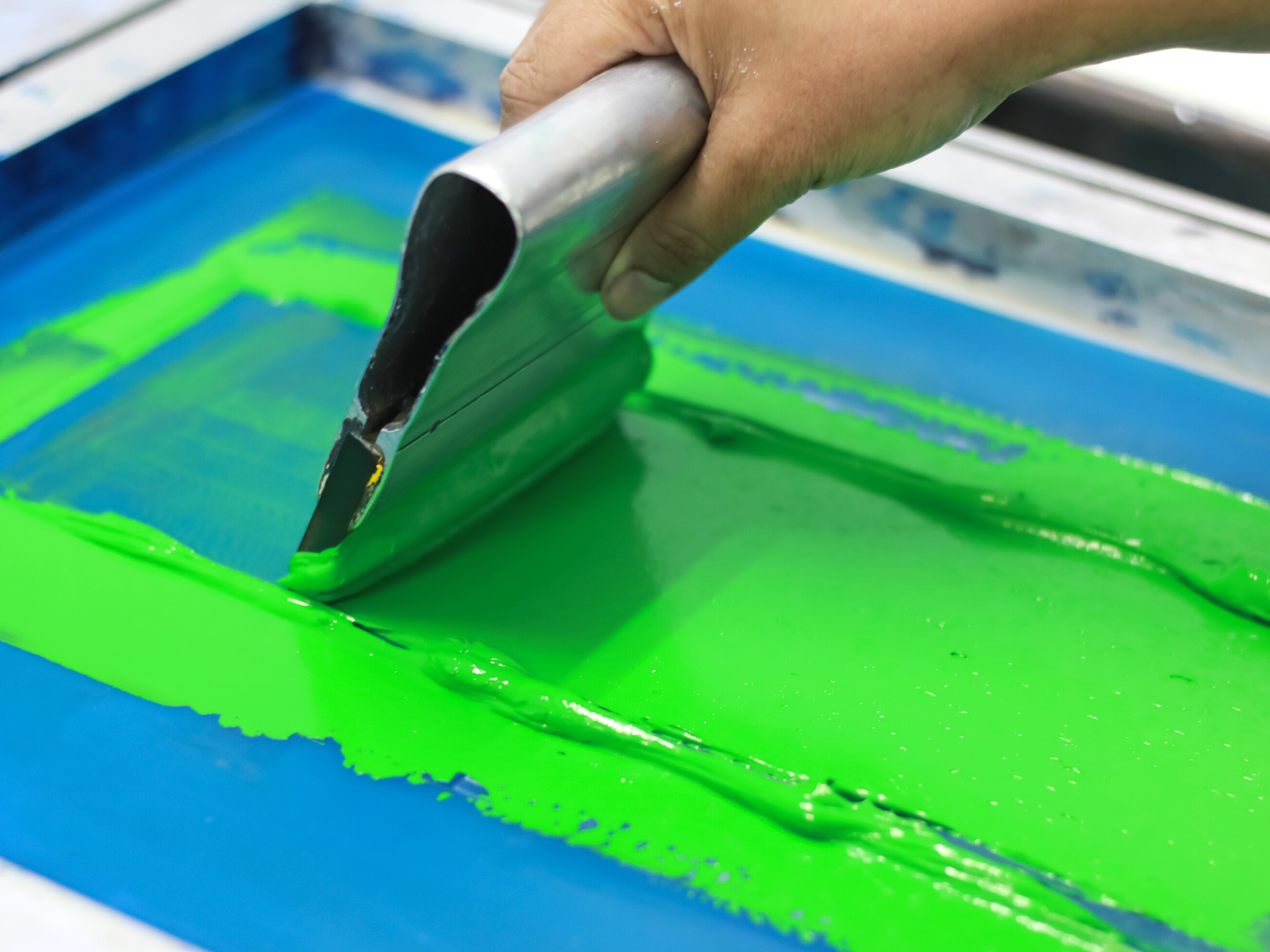
The Evolution of Printmaking Materials
The printmaking landscape has witnessed a significant evolution, with artists transitioning from traditional stone or metal plates to synthetic materials.
This shift has allowed for greater flexibility and innovation within the realm of printmaking processes.
Unlike engraving, which typically involves carving into a hard surface, contemporary printmakers often employ synthetic plates that can be etched or manipulated with less physical strain.
These modern materials can also accommodate a wider range of textures and techniques, enabling artists to push the boundaries of traditional print patterns.
Advancements in materials have also influenced the longevity and reproducibility of prints.
Where once the whole plate, whether it be a smooth stone or a wood block, would wear down after multiple impressions, synthetic plates can endure longer, allowing for larger edition sizes.
Moreover, the use of acid resistant ground and greasy crayon on these plates has refined the precision of the resulting print, ensuring that even the most intricate designs are replicated with clarity and consistency.
The integration of these materials has not only expanded the artistic possibilities but also made the printing process more efficient and sustainable.
The Convergence of Traditional and Digital Techniques
In the realm of printmaking, the emergence of digital prints has created a fascinating intersection between traditional printing techniques and modern technology.
Digital printing does not rely on an inked surface interacting with paper through pressure; instead, it uses electronic files and inkjet or laser printers to produce images on a variety of substrates.
This method has revolutionized the way artists and printers think about print patterns and the reproduction of images, offering a level of precision and color variation that is difficult to achieve with traditional methods.
However, the rise of digital prints has not diminished the value of traditional printmaking processes such as relief printmaking, screen prints, and woodcut prints.
Many artists choose to blend the old with the new, using digital technology to plan and execute their designs before transferring them onto a separate block or plate for printing.
This hybrid approach allows for the creation of complex, layered works that combine the tactile quality of a relief process with the meticulous detail afforded by digital tools.
The result is a body of work that respects the heritage of printmaking while embracing the potential of contemporary techniques.
The Future of Printmaking
The world of printmaking is a rich and ever-evolving landscape that offers endless creative possibilities.
From traditional techniques such as intaglio and relief printing to modern advancements in materials and digital tools, printmakers have access to a diverse range of methods for bringing their artistic vision to life.
As technology continues to advance and new materials are discovered, the future of printmaking looks bright and full of potential for innovation.
While there are many techniques of printmaking to explore, intaglio stands out for its intricate processes and the skill required.
Creating an intaglio print involves a meticulous chemical process and precise handwork on a metal plate, making it one of the most technically demanding techniques in print
Intaglio printmaking stands as the pinnacle of complexity in the realm of printmaking techniques.
Its intricate processes, from the detailed work on the metal plate to the precise use of the printing press, make it a challenging yet rewarding art form.
The depth and richness of intaglio prints are a testament to the skill and dedication of the artists who choose to master this technique.
Whether one chooses to utilize traditional or digital methods, the art form continues to captivate audiences with its unique blend of technical skill and artistic expression.
As such, it will undoubtedly remain a beloved medium in the world of visual arts for years to come.
So, let us continue to celebrate and explore the fascinating world of intaglio printmaking, appreciating its complexity and versatility as we push the boundaries of what is possible within this timeless technique.
Go forth, delve into the intricacies of intaglio, and discover your own unique artistic voice within this challenging yet endlessly rewarding art form!


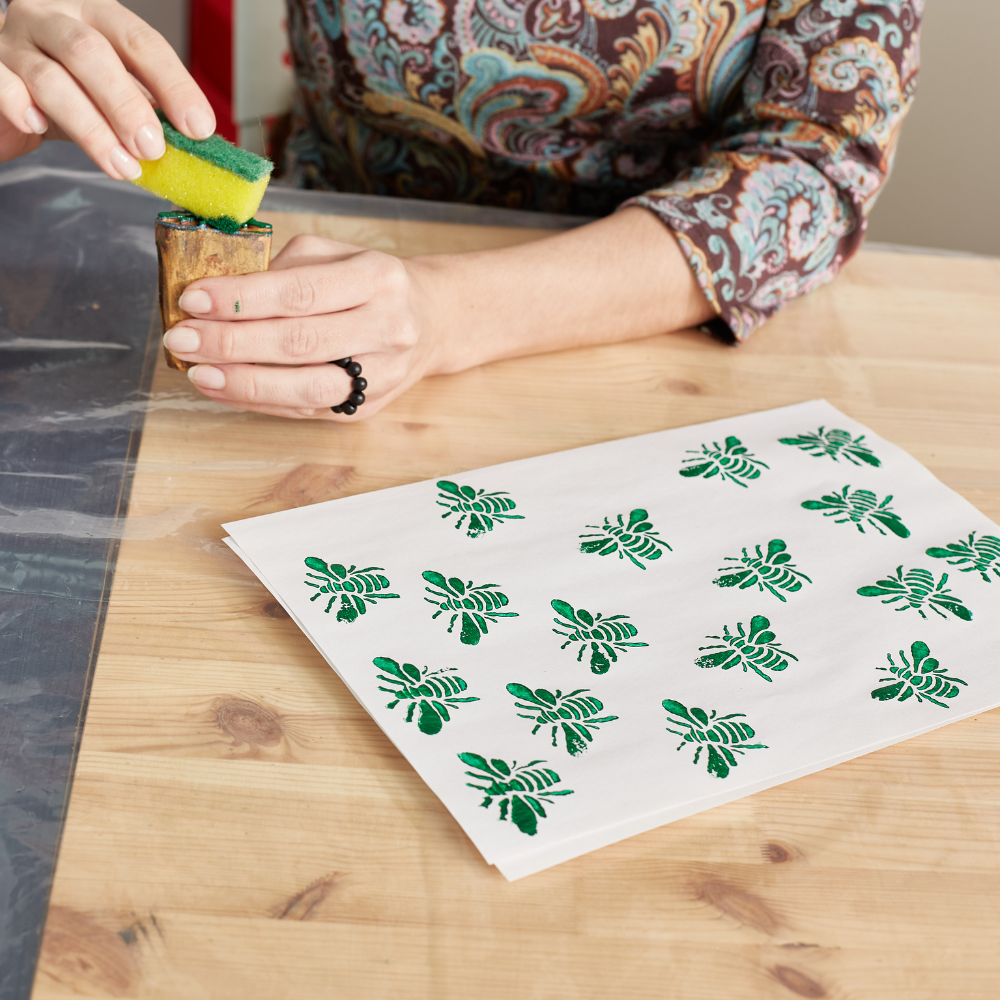
Eager to learn more about printmaking techniques? Check out The Brinton Museum's video!
Want even more content about creativity and art?
Be sure to check out all of our creative chronicles!
Eager to get creative with printmaking?
Check out some of our other articles:
-What are the 4 main types of printmaking?
-How are woodcut and linocut similar?
